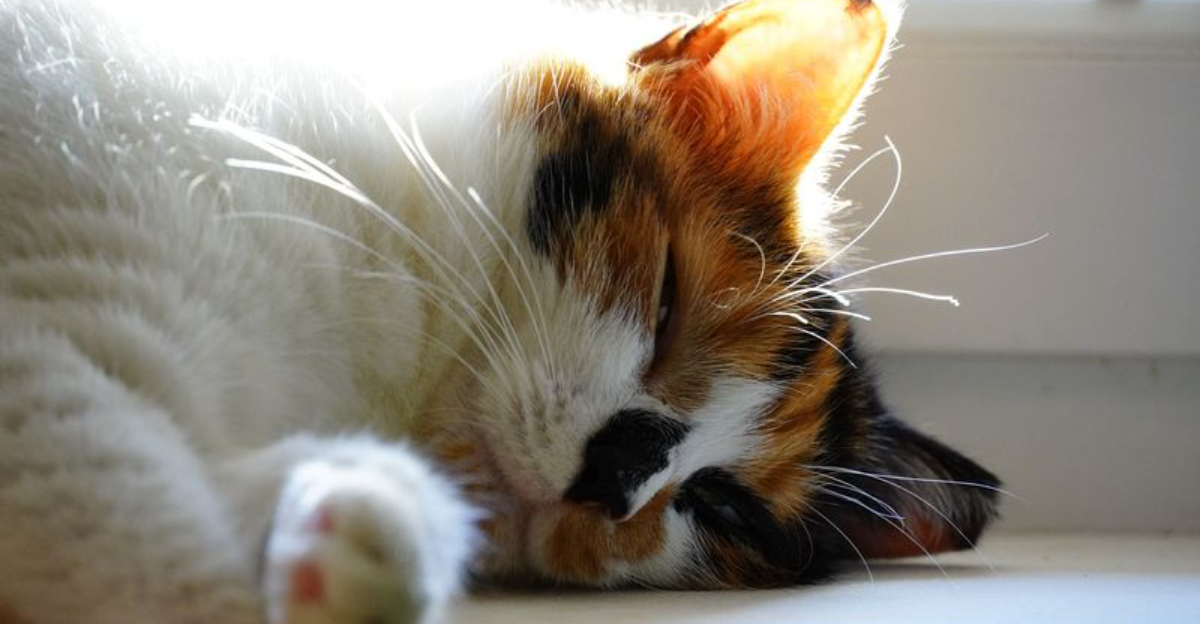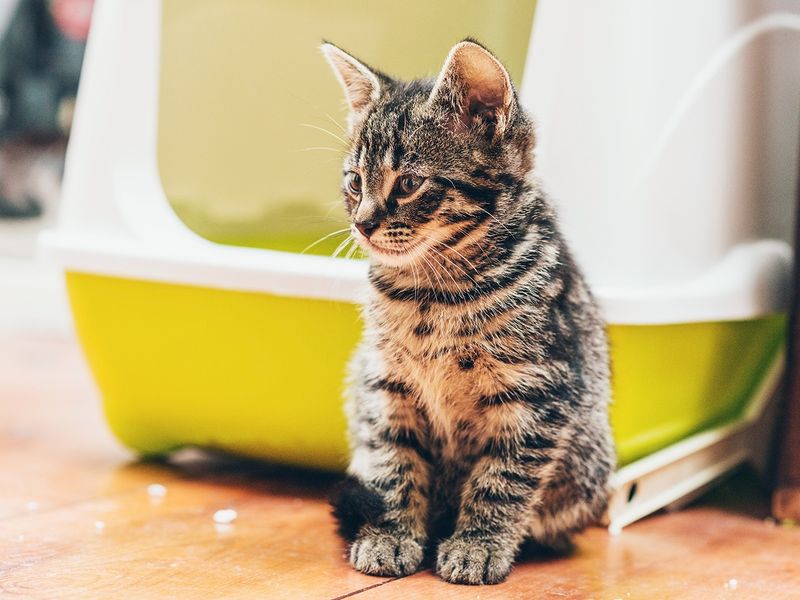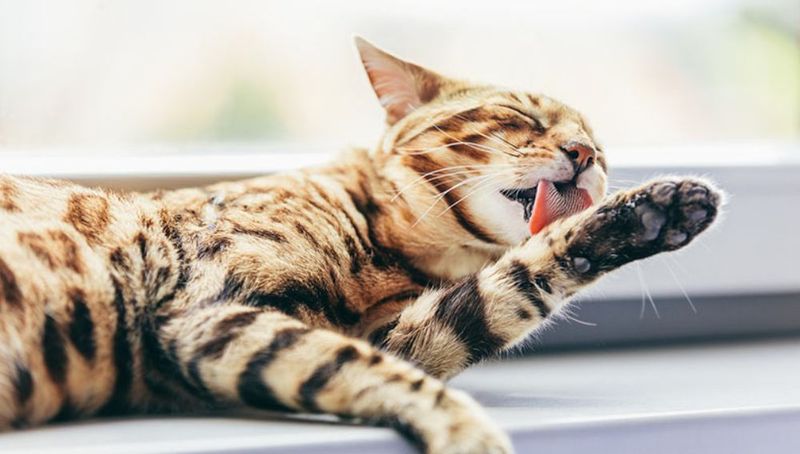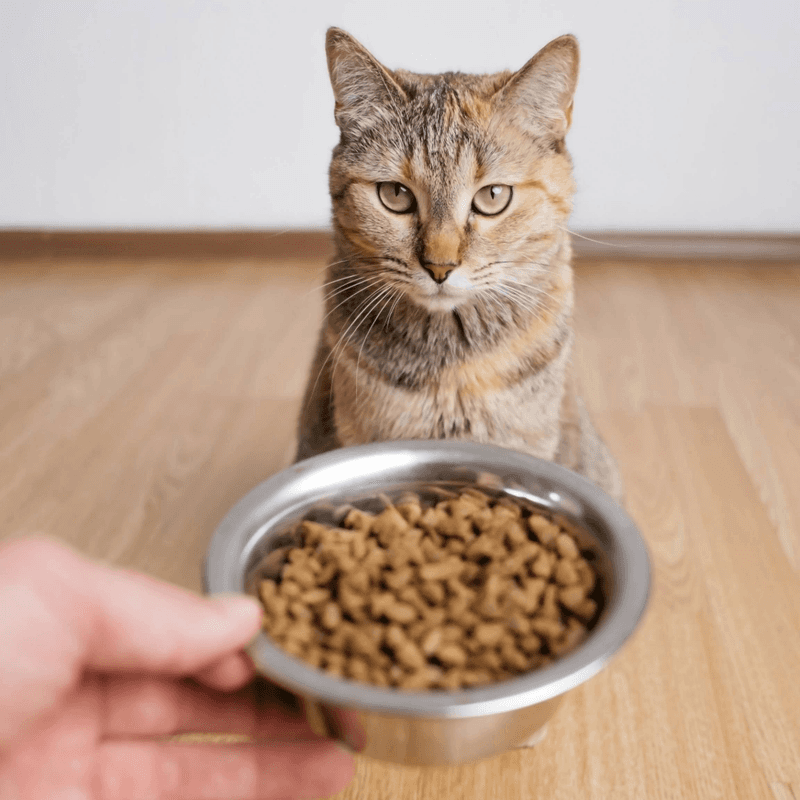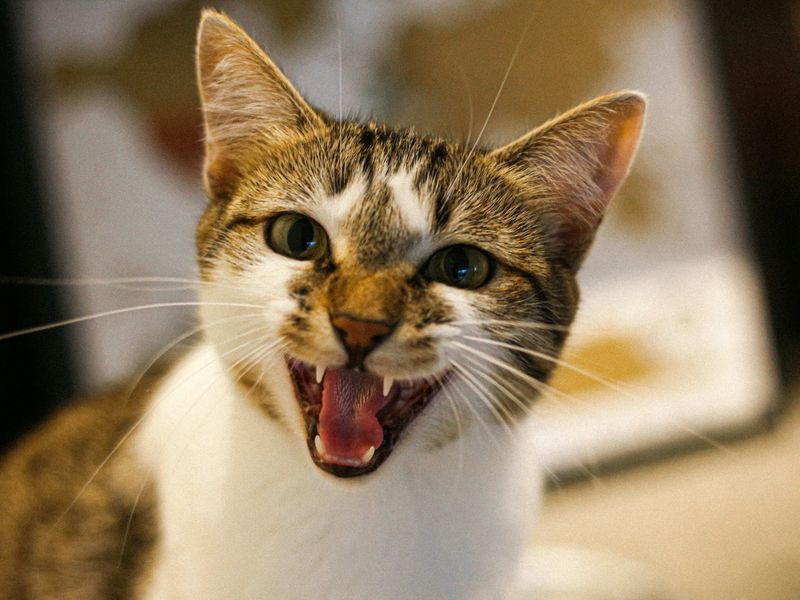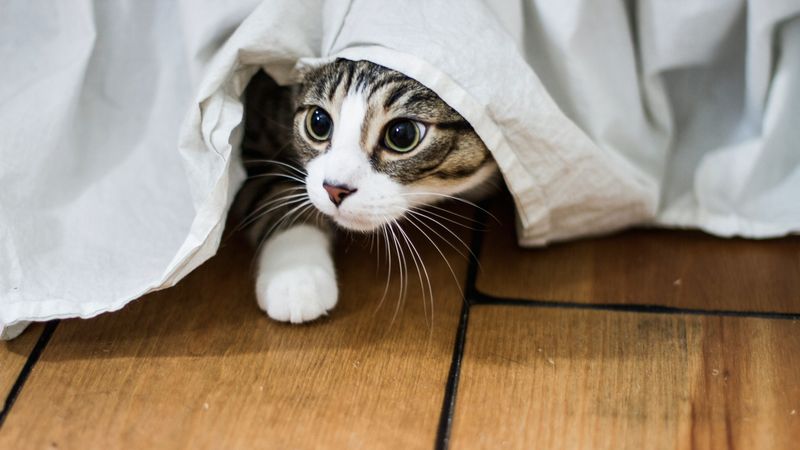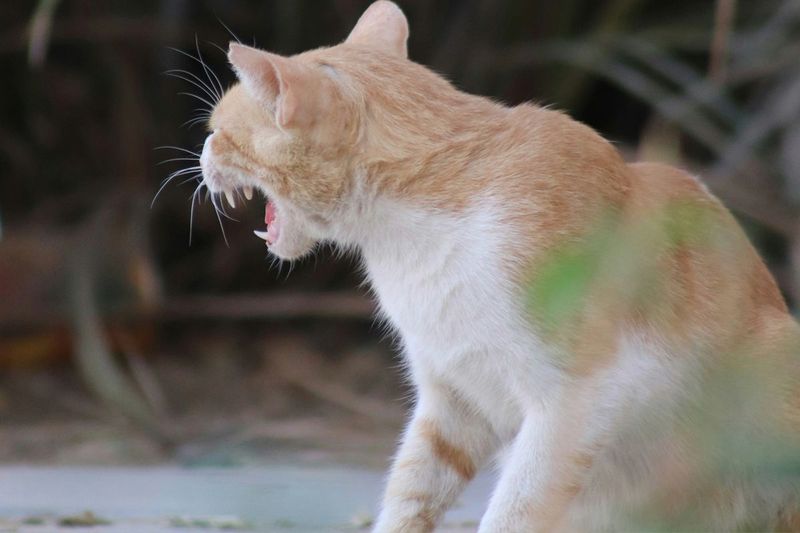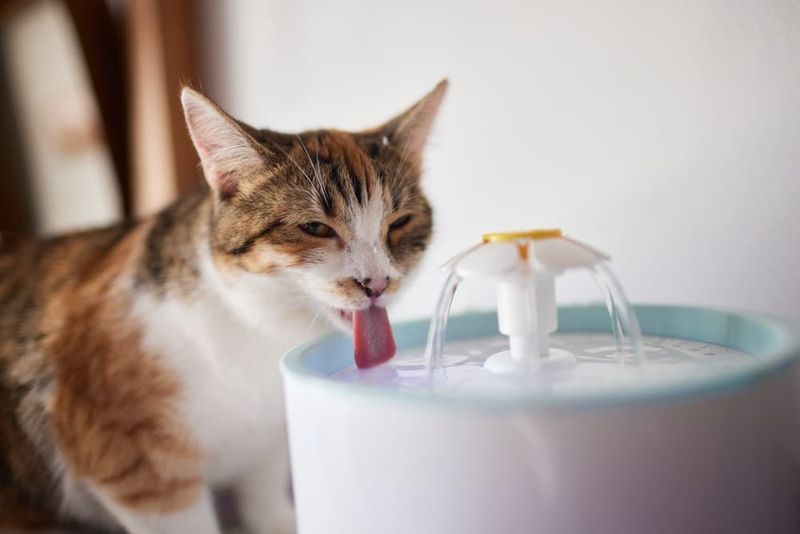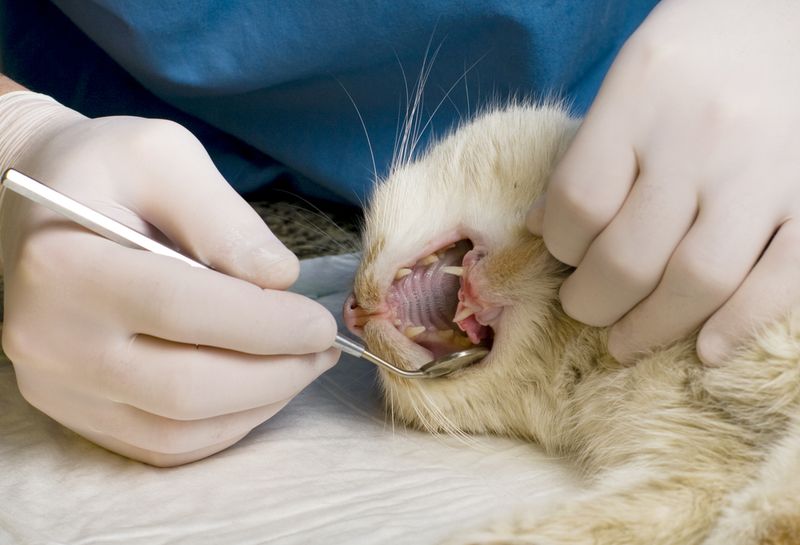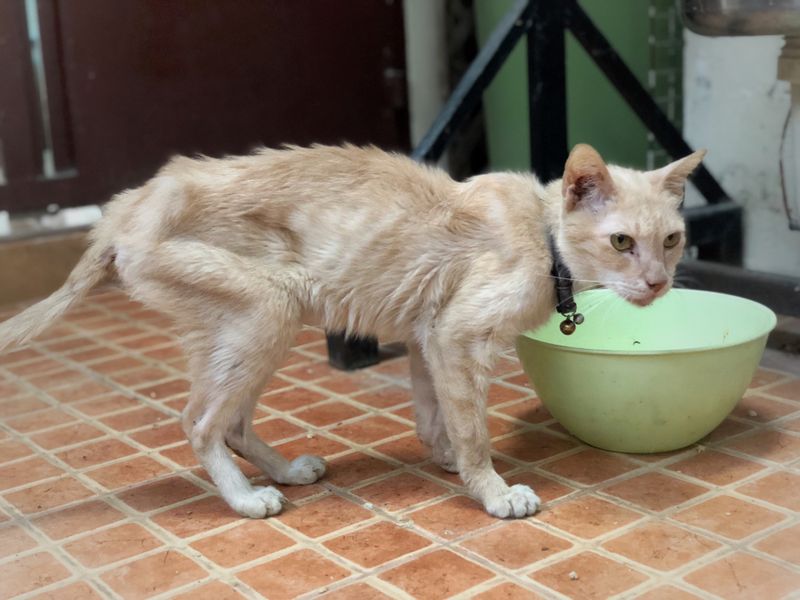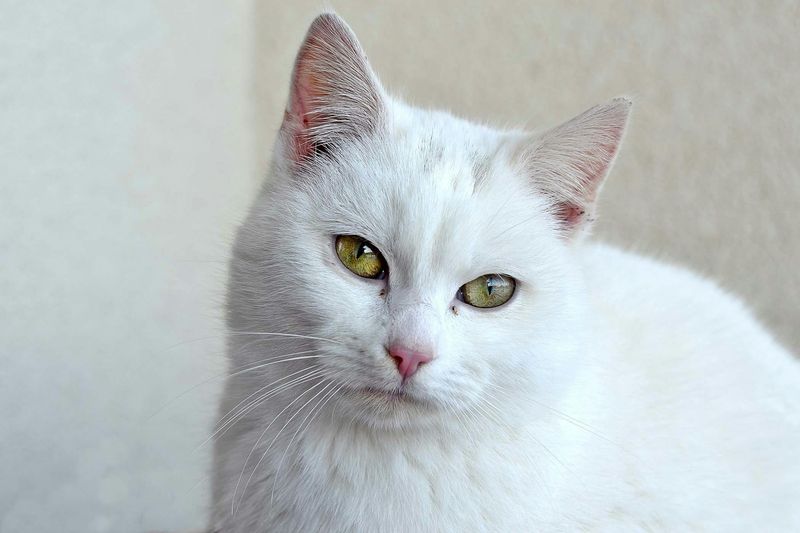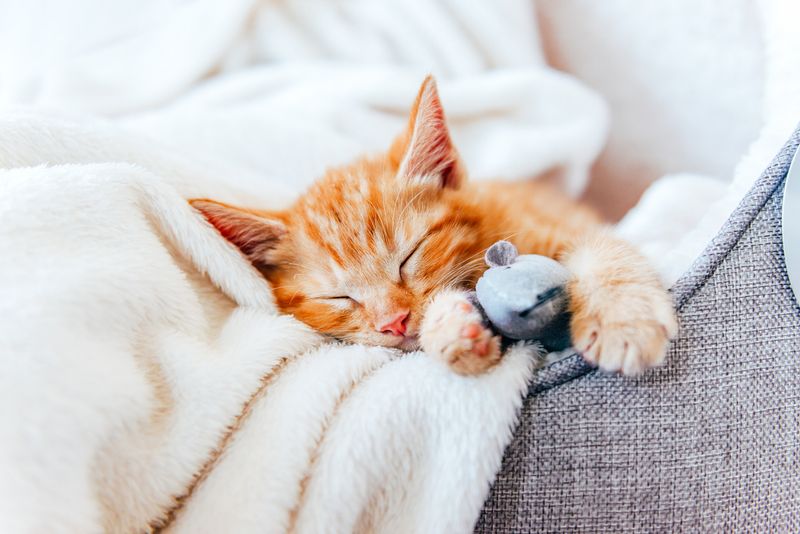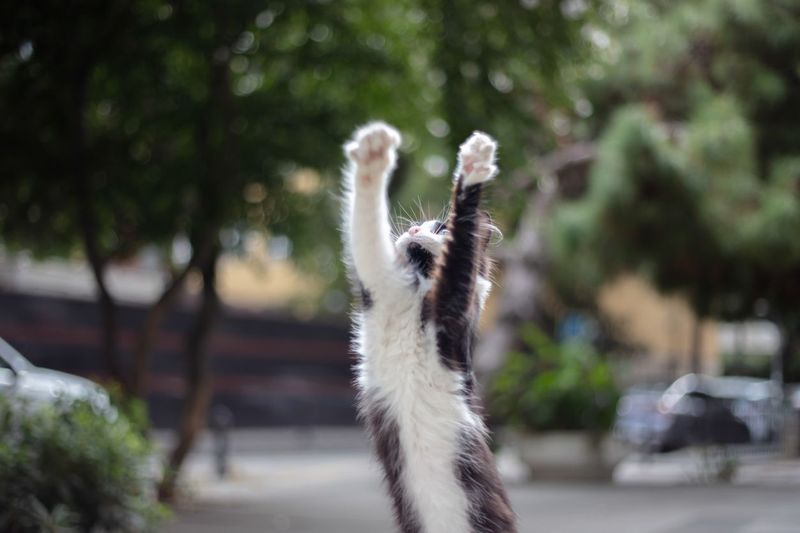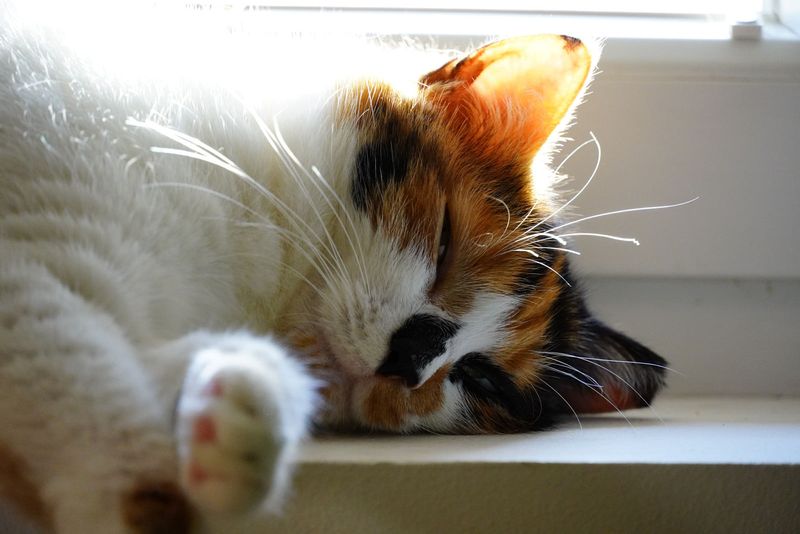📖 Table of Content:
- 1. Litter Box Avoidance
- 2. Excessive Grooming or Hair Loss
- 3. Changes in Appetite
- 4. Unusual Vocalization
- 5. Hiding More Than Usual
- 6. Aggression or Personality Changes
- 7. Changes in Water Consumption
- 8. Bad Breath or Drooling
- 9. Weight Loss or Gain
- 10. Unusual Head Positioning
- 11. Changes in Sleep Patterns
- 12. Difficulty Jumping or Climbing
- 13. Breathing Changes
Cats are masters of disguise when it comes to hiding illness or discomfort. As natural survivors, they instinctively conceal weakness, making it challenging for even attentive owners to spot problems. Knowing what subtle behavior changes to look for can help you catch health issues early, potentially saving your cat from suffering and expensive vet bills later. Here are 13 warning signs your feline friend might be trying to tell you something’s wrong.
1. Litter Box Avoidance
Suddenly avoiding the litter box is a red flag that shouldn’t be dismissed as mere stubbornness. Cats are naturally clean animals who prefer using their designated bathroom spot.
Pain during urination or defecation often causes cats to associate the litter box with discomfort, leading them to seek alternatives. Urinary tract infections, kidney problems, or digestive issues could be the culprit.
Male cats who strain without producing urine need immediate veterinary attention as they may have a potentially fatal urinary blockage. Don’t punish your cat – help them instead!
2. Excessive Grooming or Hair Loss
Cats typically spend up to 50% of their waking hours grooming, but when it becomes obsessive, something’s amiss. Bald patches or irritated skin often appear when a cat overgrooms due to stress, allergies, or skin conditions.
Food allergies commonly cause itching around the face and neck, while flea allergies typically affect the base of the tail. Psychological issues like anxiety can trigger compulsive grooming behaviors too.
Watch for excessive licking of one particular area, which might indicate pain in that spot. Early intervention can prevent the behavior from becoming a difficult-to-break habit.
3. Changes in Appetite
A sudden shift in your cat’s eating habits deserves attention. Cats who skip more than one or two meals might be dealing with dental pain, digestive upset, or more serious conditions.
Increased appetite could signal hyperthyroidism, diabetes, or intestinal parasites. These conditions cause the body to burn energy inefficiently, making your cat constantly hungry despite eating more.
Senior cats with kidney disease often experience decreased appetite as toxins build up in their system. If your normally food-motivated feline suddenly turns away from favorite treats, it’s time for a vet visit rather than trying different foods.
4. Unusual Vocalization
When your typically quiet cat becomes unusually vocal, they’re trying to communicate something important. Excessive meowing, yowling, or crying – especially at night – often indicates discomfort or distress.
Older cats sometimes vocalize more due to cognitive dysfunction (similar to dementia in humans), becoming disoriented or anxious. Certain breeds like Siamese naturally talk more, but a sudden increase warrants investigation.
Cats in pain may produce low-pitched growls or howls unlike their normal sounds. Hyperthyroidism can also cause increased vocalization along with other symptoms like weight loss despite increased appetite.
5. Hiding More Than Usual
Cats naturally seek solitude occasionally, but extended hiding often signals they’re not feeling well. A cat who suddenly starts spending hours under the bed or in closets may be trying to protect themselves when feeling vulnerable.
Sick or injured cats instinctively hide to avoid predators, a behavior deeply ingrained from their wild ancestors. This self-preservation tactic makes illness detection challenging for owners.
Check hard-to-reach spots if your social butterfly suddenly disappears for extended periods. Cats in pain typically seek quiet, dark places away from household traffic. This withdrawal behavior requires prompt attention, especially in normally sociable cats.
6. Aggression or Personality Changes
Your normally affectionate feline friend suddenly hissing or swatting when touched could be saying “I hurt.” Cats often become irritable or aggressive when in pain or feeling threatened by illness.
Areas that trigger aggressive responses when touched may indicate pain in that specific location. A formerly playful cat becoming withdrawn, or a shy cat suddenly seeking constant attention both represent significant personality shifts worth investigating.
Brain tumors, thyroid disorders, and certain infections can alter brain chemistry and behavior. Never punish these behaviors – they’re symptoms, not deliberate bad conduct. Instead, note when and where aggression occurs to help your veterinarian pinpoint the cause.
7. Changes in Water Consumption
Monitoring your cat’s drinking habits can reveal important health clues. Increased thirst (polydipsia) often signals kidney disease, diabetes, or hyperthyroidism – common conditions in middle-aged and senior cats.
A cat suddenly camping out at the water bowl or seeking water from unusual sources like faucets may be compensating for excessive fluid loss. Conversely, decreased water intake can lead to dangerous dehydration.
Measuring water consumption helps track changes – healthy cats typically drink about 3.5-4.5 ounces of water per 5 pounds of body weight daily. Consider switching to wet food for cats with increased thirst, as it provides additional moisture while you address the underlying cause.
8. Bad Breath or Drooling
Foul-smelling breath goes beyond normal “cat breath” and often indicates dental disease, which affects up to 85% of cats over three years old. That fishy odor might signal painful gingivitis, tooth decay, or oral tumors.
Excessive drooling, difficulty eating, or pawing at the mouth frequently accompany dental issues. Kidney disease can cause breath that smells like ammonia or urine, while sweet or fruity breath might indicate diabetes.
Cats naturally hide pain, so they’ll often continue eating despite significant oral discomfort. Regular dental check-ups can catch problems early before they lead to tooth loss or spread infection to vital organs like the heart or kidneys.
9. Weight Loss or Gain
Unexplained weight changes deserve immediate attention, as they rarely happen without cause in cats. Gradual weight loss might go unnoticed in long-haired breeds until it becomes severe.
Hyperthyroidism commonly causes weight loss despite increased appetite, while diabetes can cause either weight gain or loss depending on the stage. Intestinal parasites rob cats of nutrients, causing weight loss despite normal eating habits.
Regular weighing helps detect changes early – even a pound represents significant loss in an average 10-pound cat. Keep a monthly weight record, especially for seniors. Rapid weight loss (particularly without eating less) requires urgent veterinary evaluation.
10. Unusual Head Positioning
A cat persistently tilting or shaking their head suggests ear problems or neurological issues. Head tilting often indicates inner ear infections that affect balance and coordination.
Ear mites, common parasites causing intense itchiness, lead to excessive scratching and head shaking. The resulting dark, coffee-ground-like discharge has a distinctive odor. More serious conditions like polyps or tumors can cause similar symptoms.
Vestibular disease affects the balance system, causing dramatic head tilts, circling, and disorientation. While frightening to witness, many cases improve with proper treatment. Any head tilt lasting more than a day requires professional evaluation to prevent permanent damage.
11. Changes in Sleep Patterns
While cats are famous nappers, significant changes in sleep habits can indicate health problems. Sleeping more than usual might signal pain, infection, or metabolic disorders like diabetes.
Older cats with cognitive dysfunction often experience reversed day-night cycles, becoming restless and vocal at night while sleeping more during daytime. Hyperthyroidism typically causes hyperactivity and reduced sleep due to elevated metabolism.
Pain from arthritis commonly disrupts sleep, causing cats to shift positions frequently or sleep in unusual locations. Monitor both quantity and quality of sleep – a cat who seems restless rather than deeply relaxed during nap time might be uncomfortable. Comfortable bedding in quiet locations helps cats with sleep disturbances.
12. Difficulty Jumping or Climbing
Hesitation before jumping or completely avoiding once-favorite perches often indicates joint pain or muscle weakness. Cats naturally hide discomfort, so these mobility changes might be your first clue that something’s wrong.
Arthritis affects over 90% of cats over 12 years old but frequently goes undiagnosed. Cats with painful joints may still jump when motivated but show reluctance or calculate jumps more carefully than before.
Heart and respiratory conditions can cause weakness and exercise intolerance, making climbing difficult. Creating accessible paths to favorite spots with steps or ramps helps while you address the underlying cause. Joint supplements, pain management, and weight control can significantly improve mobility for arthritic cats.
13. Breathing Changes
Healthy cats breathe smoothly and almost imperceptibly at 20-30 breaths per minute while resting. Open-mouth breathing, wheezing, or labored breathing with exaggerated chest movements signals respiratory distress requiring immediate veterinary care.
Asthma causes coughing and breathing difficulty that may look like hairball episodes but without producing anything. Heart disease often manifests as rapid breathing even during rest.
Cats breathing with their mouths open or with their elbows pushed away from their body (to expand lung capacity) need emergency attention – these are never normal breathing patterns for cats. Count your cat’s resting respiratory rate occasionally when they’re healthy to establish their normal baseline.
